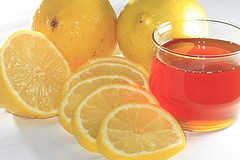Becoming an informed shopper when it comes to sunscreen is one of the most important health decisions you can make for your long term skin and minimizing cell damage and cancer causing agents. We have spelled out some of the myths of SPF numbers and ingredients to help you make a smart choice.

Why is Zinc Oxide Used in Sunscreens?
Zinc Oxide protects from both UVA and UVB rays effectively. Another mineral ingredient found in sunscreen is Titanium Dioxide which protects from UVB and only short wavelengths of UVA radiation. Zinc Oxide is the single most broad spectrum ingredient in protection from sun radiation.
What is the difference between UVA and UVB Rays?
UVA rays cause premature aging and long term sun damage to skin. UVA rays can pass through glass and are 20 times more abundant in the atmosphere than UVB rays. UVA amounts do not change by weather or altitiude.
UVB rays cause burning and vary with the seasons. The UVB rays are more abundant in the summer and increase at high altitudes and near the equator. The SPF factor on sunscreen only indicates protection from UVB rays which are related to 90% of non-melanoma skin cancers and cataracts.
UVA and UVB rays are less prevalent before 10 am and after 6 pm, so reducing sun exposure during the middle of the day helps to maintain skin health.
What Does “ Water Resistance “ Mean?
Water resistance claims must indicate whether sunscreen is effective for 40 or 90 minutes while swimming or sweating. Sunscreen should be applied liberally a half hour before going outdoors.
Is a SPF of 50 for Sunscreen Really Better?
Starting summer of 2013 per the FDA you will no longer be able to purchase any sunscreen over SPF 50. Sunscreens may also not be laveled as waterproof or sweatproof anc cannot claim to provide protection for more than two hours without reapplication or provide instant protection. SPF numbers can be missleading, as 30 SPF does not give double protection of 15 SPF:
SPF 2                   Blocks            50% UVA\UVB Rays
SPF 15                      Blocks            93% UVA\UVB Rays
SPF 30                       Blocks            97% UVA\UVB Rays
SPF 50                       Blocks            99% UVA\UVB Rays
SPF 70                       Blocks            99.6% UVA\UVB Rays
SPF 90                       Blocks            99.9% UVA\UVB Rays
Sunscreens with an SPF over 50 give consumers a false sense of security. Therefore application could be a sparse and not as often as recommended. Application should be at least 2 oz. Of lotion (about a shot glass full) and reapply often. The sun breaks down the ingredients in sunscreen that protects the skin.
High SPF products require higher concentrations of sun filtering chemicals and some of the chemicals have been linked to tissue damage and hormone disruption and allergic reactions. The extra chemical exposure is not justified by a higher SPF’s efficacy.
What Harmful Ingredients Should Be Avoided in Sunscreen?
- Oxybenzone – This is considered a penetration enhancer (helps other chemicals penetrate to skin) The chemical is linked to exzema related allergic reactions, hormone altercations are to chemical cell damage that may lead to skin cancer. This is why a higher SPF of 50 is actually harmful.
- Homosalate – Similar to Oxybenzone, this chemical cannot be dispelled by our bodies to match the absorption rate. The toxic leves are accumulated over time.
- Paraben Preservatives – Derived from petroleum and plant souces, these preservatives have caused allergic reactions most profound in the chronic effects of parabens are known to disrupt hormones and cause reproductive toxicity. Parabens have links to breast tumors, skin cell damage and stress on the bodies tissues.
- Octocrylene – As a synthetic UV absorber and sunscreen ingredient this chemical has been found to cause cell mutation and may accumulate in our bodies. According to the journal Free Radical Biology and Medicine Octocrylene may increase the occurrence of malignant melanoma in those who utilize sunscreen versus those who do not.
- Retinyl Palmitate – A form of Vitamin A this may contribute to skin tumors when applied in the sun. As many as 25% of sunscreens contain this ingredient because it is an anti-oxidant. With concrete evidence as being conducted, but the Environmental Working Group recomends utilizing sunscreen without Vitamin A.
- Octinoxate – Another element in sunscreen used to aid in ingredient absorption, studies have shown strong evidence in the disruption of the endocrine system by altering hormones. This chemical when seeped into the water is considered not only harmful to humans but wildlife as well. This common ingredient may be the main culprit for premature aging that produces free radicals that attach to skin cells. Since one of the main reasons for sunscreen is to protect your skin, this ingredient is counter-productive to the main goal of sunscreen.
- Artificial Scent – Allergic reactions, reactions from skin and eyes, difficulty in breathing, hormone disruption and estrogen stimulator have been linked to scent in “ parafins “ listed as an ingredient. These artificial parifins have been found to harm aquatic life.
What is One of the Highest Percentages of Zinc Oxide Available?
While 7% is readily available in most sunscreens the skin care line of eltaMD has four products with a percentage of 9%.
How Does Your Skin Tan?
There really is no safe way to tan. The skins reaction to sun exposure in scientific terms means ultraviolet light is penetrating the epidermis causing your skin to react by producing melanin for your suntan. A tan might give you a healthy, young glow initially, but over time it will give you the exact opposite; wrinkles, age spots, changes in skin texture or worse – cancer.
What are Some Specific Spots We Neglect to Put Sunscreen On?
Easy, ever see a picture of a fabulous looking older gal and looked at her hands? Sunscreen on one’s hands, chest, arms, ears and head (for bald or sparse scalps) is equally as important.
Loraine-Dale Hall has been a Skin Care aesthetician for over 25 years who owns a spa in Solana Beach CA and an Online Skin Store www.shopspaViolet.com



Leave a Reply